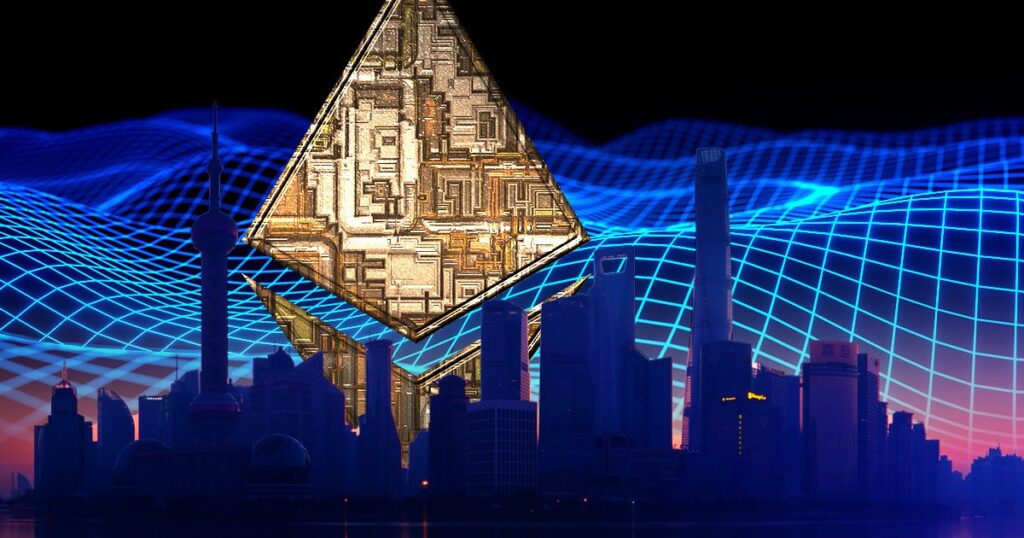Today, a second
Ethereum test network (testnet) called Sepolia replicated successful withdrawals of staked ether (ETH), pushing the Ethereum blockchain closer to its much anticipated Shanghai Upgrade.The upgrade was initiated at epoch 56832 at 4:04 UTC; completed at 4:17 UTC (11:17 p.m.ET).
Ethereum achieves yet another milestone
The Ethereum blockchain’s
Sepolia testnet has undergone a successful update simulating the March mainnet Shanghai hard fork.The “Shapella” update, which mixes the names of forthcoming hard forks Shanghai and Capella, was successfully implemented on the testnet on February 28.
Shanghai is the client-side execution layer name for the fork, whereas Capella is the client-side consensus layer name for the upgrade.One of the significant alterations enables validators to withdraw their staked Ether (stETH) from the Beacon Chain and return it to the execution layer.
The Shanghai Upgrade will complete ETH’s transition to a fully functional proof-of-stake network, allowing validators to withdraw rewards for adding or approving blocks to the blockchain.
Validators needed to stake 32 Ether to validate on the
https://www.cryptopolitan.com/key-takeaways-from-vitalik-latest-blog/?swcfpc=1 blockchain.Users can now withdraw prizes in excess of 32 ETH and continue validating, whereas those who want to withdraw can take all 32 ETH plus rewards and stop verifying.
The next phase before the Shanghai hard fork goes live on the mainnet will be the release of the upgrade on the Ethereum Goerli testnet in March.
What comes next?
Before Shanghai goes live, one more test on Ethereum’s Goerli testnet is scheduled.The purpose of the test on Sepolia was to provide developers with another dress rehearsal of similar withdrawals that will occur on the main Ethereum blockchain.
Testnets are copies of the main blockchain, in this case, Ethereum, that enable developers to test app changes in a low-risk setting.
Sepolia is the second of three testnets to be simulated in this manner.In contrast to the first testnet update, which occurred earlier this month on Zhejiang, this one occurred on a closed testnet, meaning that only Ethereum core engineers operate the validators on this testnet.Sepolia also has the smallest amount of validators of the three testnets, making it the least significant.
Goerli will undergo the final testnet upgrade in the coming weeks.That would be the final dress rehearsal before the main blockchain can execute ETH withdrawals with stakes.Goerli’s testing will also be the most anticipated because it is the largest of the three testnets, and its activity most closely resembles that of the main ETH blockchain.
If developers continue to perform testnet upgrades every three weeks, the next testnet upgrade on Goerli would likely occur on March 21, which might postpone the mainnet Shanghai Upgrade into April.If that were true, there would be a little delay compared to the initial March release date that Ethereum developers had indicated for staked ETH.
Ethereum gas fees surge amid market recovery
ETH’s market fee is gradually returning to normal as a result of a recent increase in
NFT trading activity on the network.Gas prices fluctuate in response to network demand, which means that prices increase as more users attempt to include their transactions in the next Ethereum block.
Rising activity in Ethereum’s NFT market appears to be a key driver of the newfound need for gas in this scenario.
In the past nine months, according to on-chain analytics startup Glassnode, the median price for the gas that powers Ethereum transactions was between 10 and 20 gwei.This month, the price rose to 38 gwei, which is higher than during significant bear market events such as FTX’s collapse in November (36 gwei) and
Binance‘s “bank run” in December (24 gwei).
Gas consumed by Ethereum NFT transactions, in particular, has increased by 97% for two months in a row, nearing levels last seen during the “NFT boom” from mid-2021 to mid-2022.
Blur, an NFT marketplace founded in October that has now surpassed OpenSea in terms of trade volume, is responsible for much of the increased activity.
With the recent upgrade, the Ethereum network is on its way to becoming one of the best
DeFi networks in the crypto ecosystem.ETH is currently trading above $1,600 and is on the rise..
